OpenCPN in practice
Computers,
OpenCPN,
Sailing
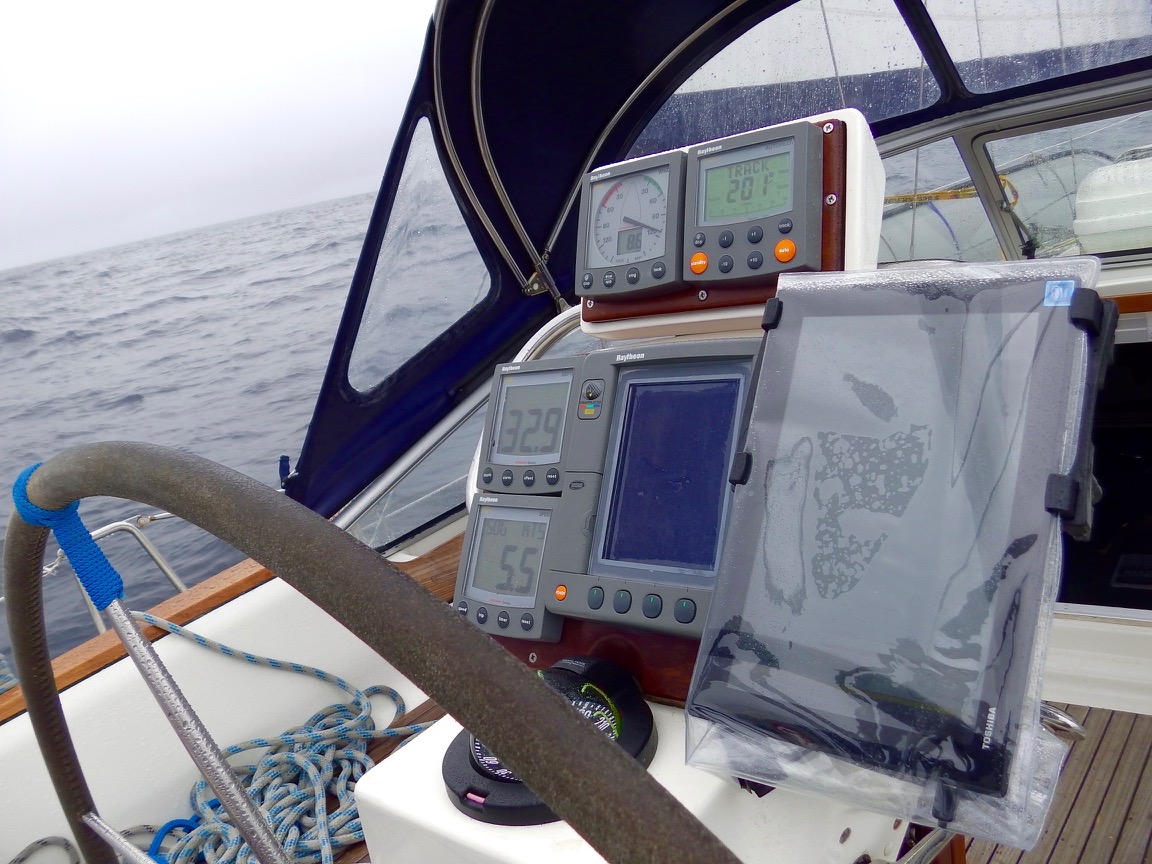
We use OpenCPN extensively. The boat came with a Raymarine RC530 chartplotter in the cockpit and a RL70 Pathfinder radar display down below, linked via HSB2. They were state of the art in 2001 when the boat was new. They still mostly work, although I've had to repair the RC530 twice so far, with a broken power button circuit, a failing display backlight and it has now developed a black hole in the LCD screen, indicating its final demise. The main reason these are still onboard is to display the radar data from the radome, which is working fine, but unfortunately the data is completely proprietary and cannot be displayed any other way.
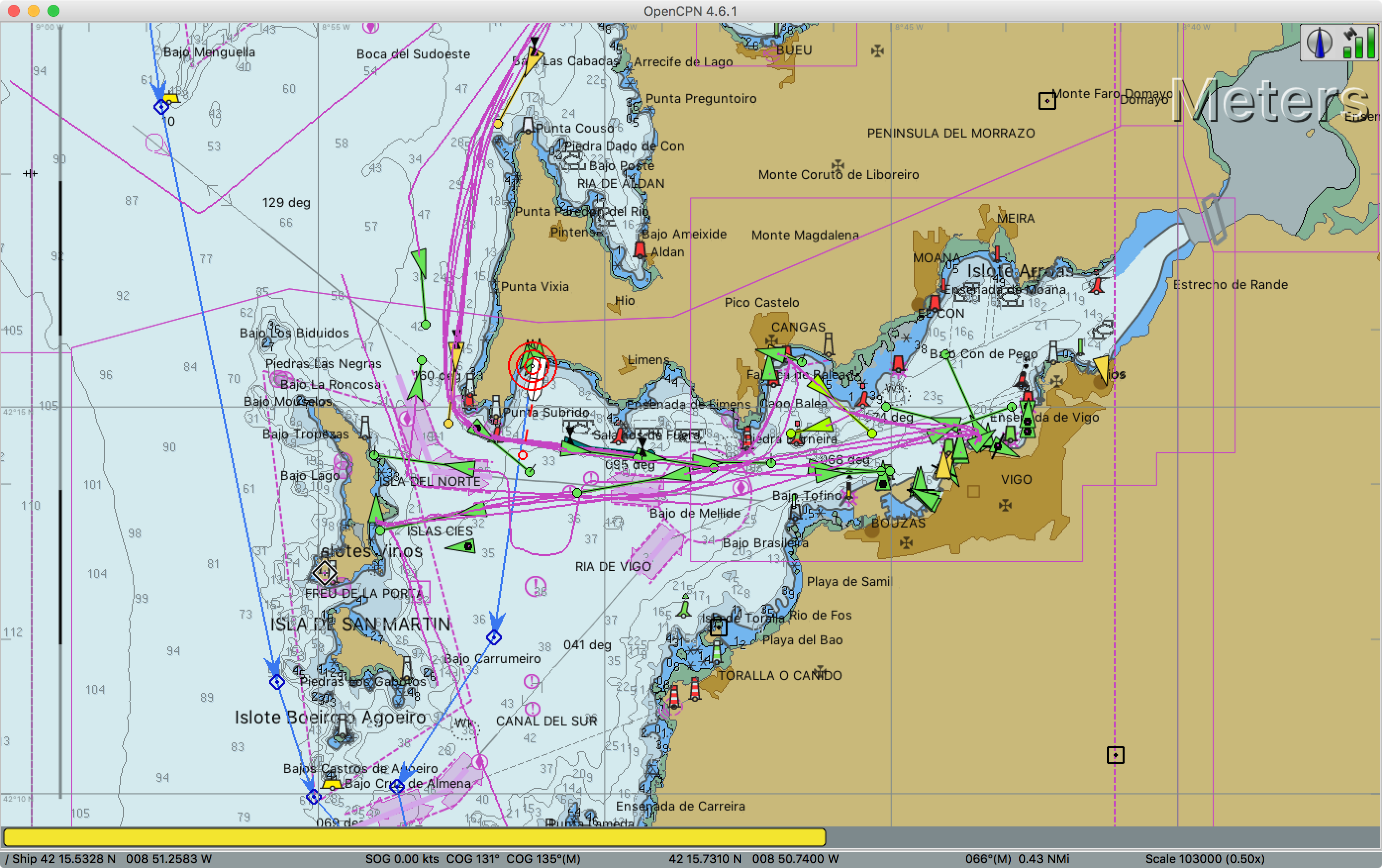
I have been keeping an eye on chartplotters from the big brands and while they're all nice and shiny, they cost far too much for what they offer: closed, proprietary software, expensive maps and god forbid you want to actually run your own software, change theirs or do anything they didn't think of. Garmin won't even let you use charts from anyone else. So the obvious choice was to use OpenCPN instead. It's free, it's open source and it runs on proper operating systems that you can tweak and fiddle with (and on Windows too).
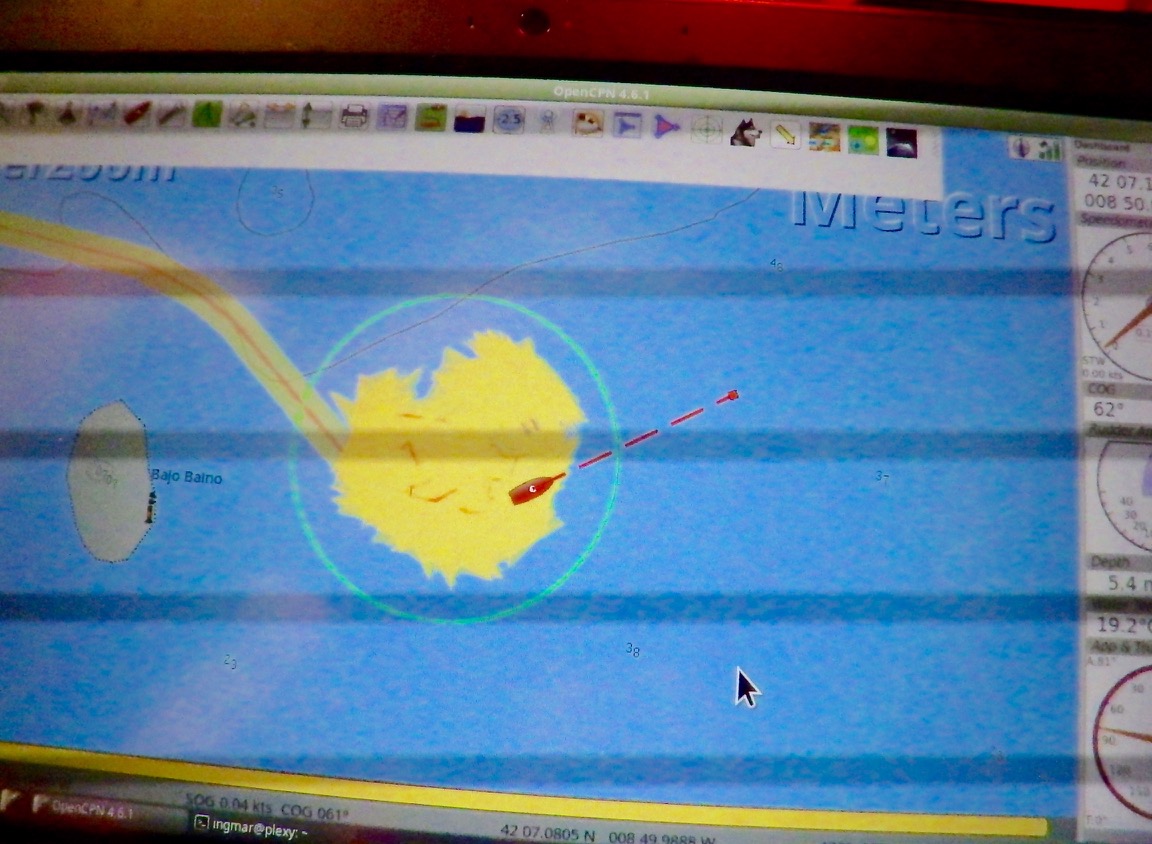
We have both a laptop at the chart table and a tablet PC in the cockpit, running in parallel (only one at a time does control the autopilot, obviously). The laptop down below is nothing special. It's an old Lenovo X220, which is from their well-reputed, robust and repairable business line. It runs Linux, because that's my preference for computers I need to not fuck up at random (it used to be FreeBSD, but that is entirely too much work). The most important part of this thing is the non-slip mat it sits on. This mat is not the usual overpriced crap sold in chandleries and stuff stays put on it up to extreme angles of heel. We even covered the main cabin table with it too.
In the cockpit is a tablet PC. Ours is a "detachable" Toshiba Satellite Click 10. Detachable (or sometimes convertible) means you can pluck the keyboard off and use it as a tablet, or pop it back in and use it like a laptop (with a lousy keyboard). It unfortunately runs Windows 10, because a) Linux didn't support half the hardware and b) it's the only non "mobile" touchscreen OS. Linux touchscreen support so far is pretty sad. Running Windows means it does want to sabotage itself regularly, so you have to block the auto-update and do a bunch of configuration stuff to keep it from shooting itself in the foot too often or eating up all your metered data while you're on 4G. It's not waterproof, so it lives in one of those sealable plastic bags you can buy for any size electronics kit for about £5. The USB charging cable is run out through a fold and it's survived rain and seawater spray flying around just fine. Sunlight readability is crap, as goes for all tablets not designed for it. You'll have to take off your sunglasses, squint and shade it with your hand. Or keep the bimini up. The touchscreen is great and works reasonably well even inside the thick plastic bag. It's mounted with a "Railblaza Screengrabba" (I apologize for their spelling) and plugged into a cigarette socket USB charger that is mounted on the rear of the binnacle instrument pod.
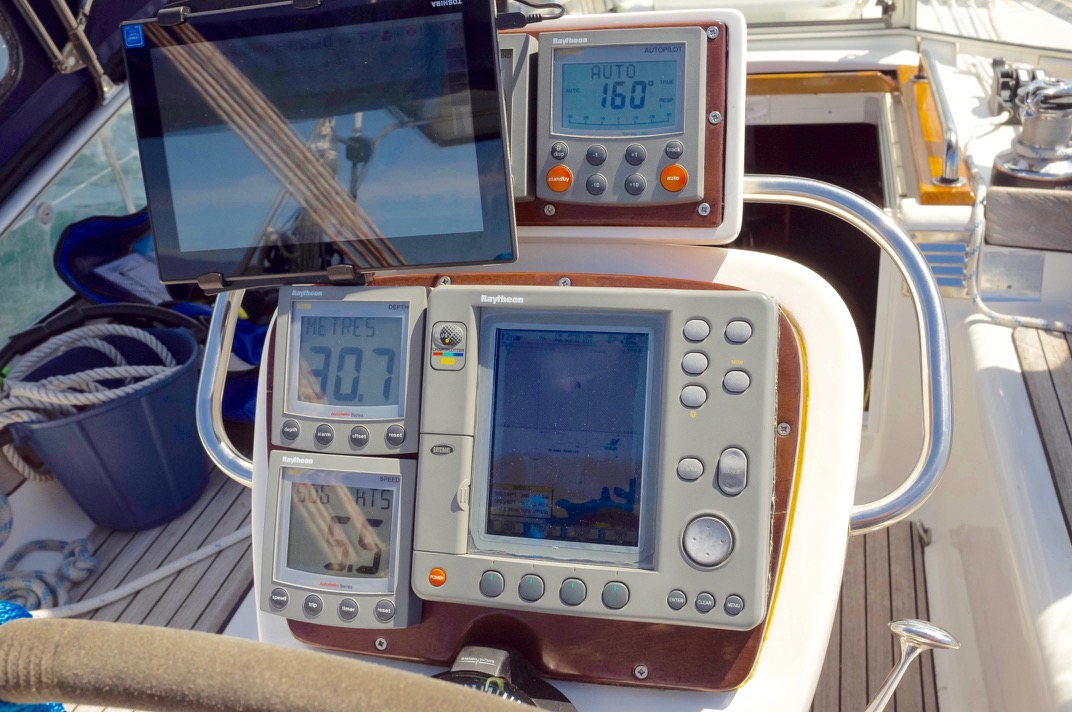
I'm not super happy with the Windows, the screen readability or the plastic bag and would much prefer a ruggedized laptop, but those are still rather rare and expensive. I have my eyes on a model I'd like to try, but it's somewhat difficult to get hold of whilst cruising. A previous experiment with a Panasonic Toughbook CF-H1 Field turned out to be a flop because of its nearly useless (resistive) touchscreen - you had to press like a gorilla to get it to recognize finger touches and dragging anything on screen (such as a chart) was completely out.
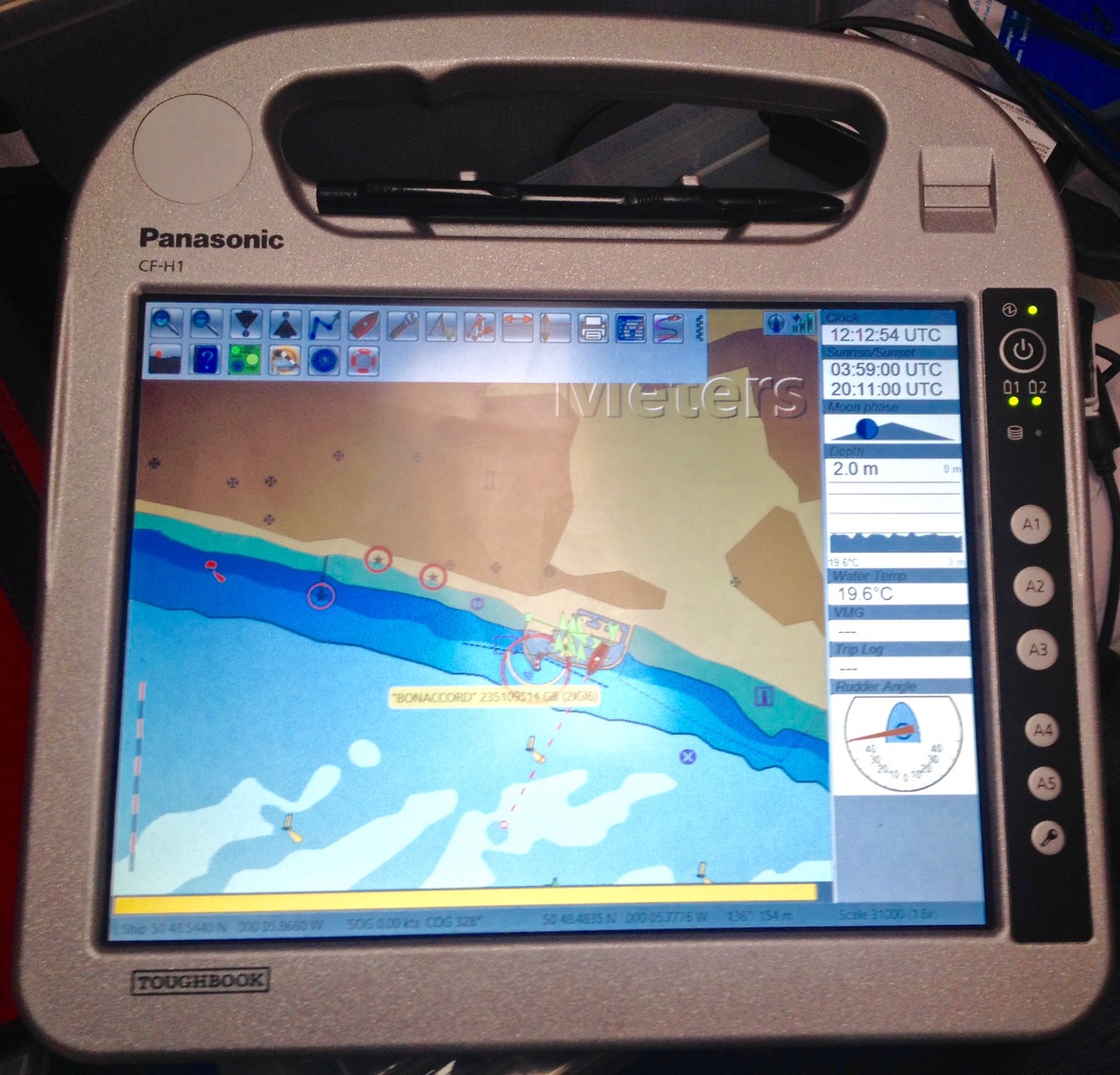
Data (instruments, sensors, AIS, GPS, etc.) gets to both of these computers via Wifi. I'll describe that setup in more detail in another post. Wifi works well almost anywhere, except in locations where there are lots of Wifi networks. This is mostly in crowded cities and sometimes marinas. It crapped out twice while going upriver into Lisbon, but usually reconnects within a minute or so. The Lenovo can just be plugged straight into the router via an Ethernet cable to bypass this problem. With the tablet that's not so easy - it doesn't even have an Ethernet port.
Apart from the above mentioned issues with readability and waterproofing, this setup is pretty good and about does what I want. There are even radar plugins for OpenCPN, so some day when I find a bag of money, it's feasible to replace the old Radome with one of the modern ones supported by these plugins (ours isn't) and then get rid of the old chartplotters and put Radar on the displays. Perhaps this winter I'll manage to get my hands on a used ruggedized tablet with a more outdoorsy screen to try out.